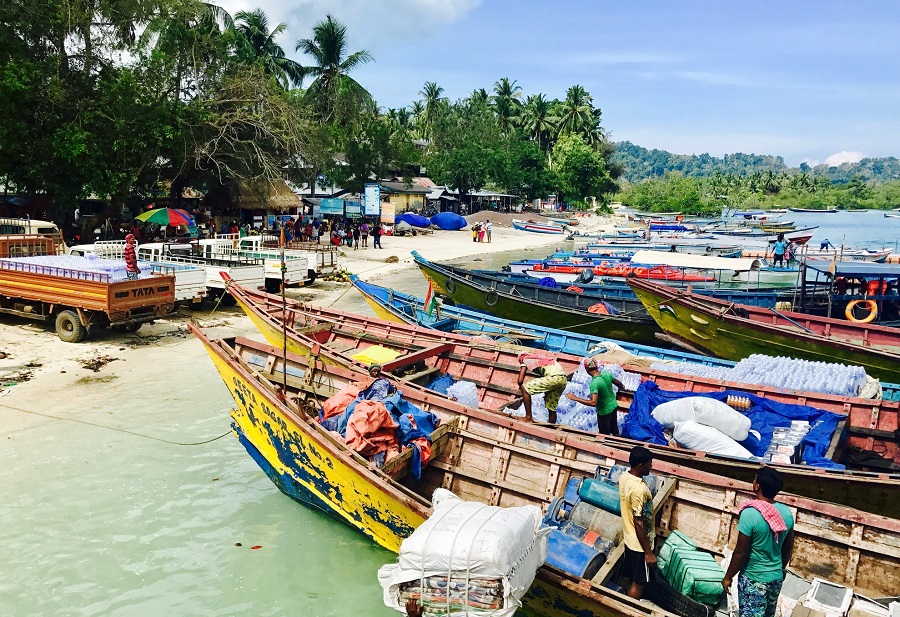Getting correct information on the geography of Andaman and Nicobar is a must before making a plan to visit the islands. You can conduct a thorough research by using sources like books, maps, and the internet to get information about Andaman and Nicobar's geographical conditions.
Andaman and Nicobar Islands and its scenic beauty attract many people who visit the place to enjoy its exclusive tropical rainforests and its flora and fauna. It consists of around 2200 varieties of floral strains and vegetation from India, Myanmar, and Malaysia. Factual information on the geography of Andaman and Nicobar helps to get an idea about its typical weather and environment.
Geographic Conditions of Andaman and Nicobar Islands
Andaman and Nicobar Islands are made up of a couple of islands and have several forests. The Andaman Islands are separated from the Nicobar Islands employing a 'ten-degree channel' which is around 150 km wide.
In Andaman and Nicobar Islands, there are around 394 islands that are spread over the territory of an area of about 3,185 square meters. Out of these, only thirty-eight islands have been enduringly colonized. Andaman consists of 325 islands and covers an area of about 6,408 km2 whereas the Nicobar group possesses only 24 islands that span an area of 1,841 km2.
The islands expand 6 ° to 8 ° in the north latitude and 92 ° to 94 ° in the east longitude. At Saddle Peak in Andaman Island, the highest point is in the Northern region, which is around 2,402 ft. The saddle peak is made up of elements such as sandstone, limestone, and clay that settle at a height of 730m above sea level.
The climate in Andaman and Nicobar Islands
The climate in Andaman and Nicobar Islands is of the tropical type that remains warm and humid throughout the year. The region faces unequal rainfall wherein, the north-east monsoon period is usually arid while the south-west monsoons are dripping. The island gets about 3180mm annual rainfall wherein, the temperature of the region varies from 23 ° to 31 ° centigrade.
Vegetation in Andaman and Nicobar Islands
There is a vast growth of epiphytic vegetation in Andaman and Nicobar Islands, mostly in the southern region. You can see a profuse growth of ferns and orchids that add beauty to the surroundings of the region. There are moist deciduous forests in the middle harbor regions of Andaman and damp evergreen forests along with woody climbers in northern Andaman. Though northern Nicobar is deprived of evergreen forests, they still constitute a larger part of the central and southern vegetation.
You can usually see grasslands in the Nicobar region and deciduous forests in Andaman. But these are completely absent in the Nicobar region, wherein the forest coverage is around 86.2% of the entire ground area. This type of unusual forest coverage consists of around twelve types of forests. These are Andaman's tropical evergreen forest, Andaman's moist deciduous forest, Andaman's semi-evergreen forest, Andaman's secondary moist deciduous forest, Brackish water mixed forest, Cane brakes, Giant evergreen forest, Littoral forest, Mangrove forest, Submontane hill valley swamp forest, Southern hilltop tropical evergreen forest, and Wet bamboo brakes.
The countryside of Andaman and Nicobar Islands
The stunning Union Territory of Andaman & Nicobar lies at a distance of about 1255 km from Kolkata and about 1190 km from Chennai. These islands are the crest region of an inundated mountain range that spreads from Myanmar to Indonesia. Located in the Bay of Bengal, the islands are a few thousand km away from the opening of the Hooghly River.
The Nicobar Islands consist of low seas and coral reefs that extend on a stretch of sandy beaches. The 'Katchal' and 'Car Nicobar' regions are manifested by flat terrain and the 'Great Nicobar' and 'Little Nicobar' with their irregular land with steep hills and valleys comprise the landscape of A & N islands.
The ecosystem of Andaman and Nicobar Islands
Andaman and Nicobar Islands include three diverse ecosystems, namely: coral reefs, mangroves, and tropical forests. These support an amazing mixture of plant and animal species that comprise a large part of the region's wonderful biodiversity.
The island region is divided into two districts, namely: South Andaman District and Nicobar District which are governed by Deputy Commissioners that are usually appointed by the Lt. Governor of the region.
Andaman and Nicobar Islands have diverse geographical characteristics and this is where the beauty of this place lies.









0 Comments